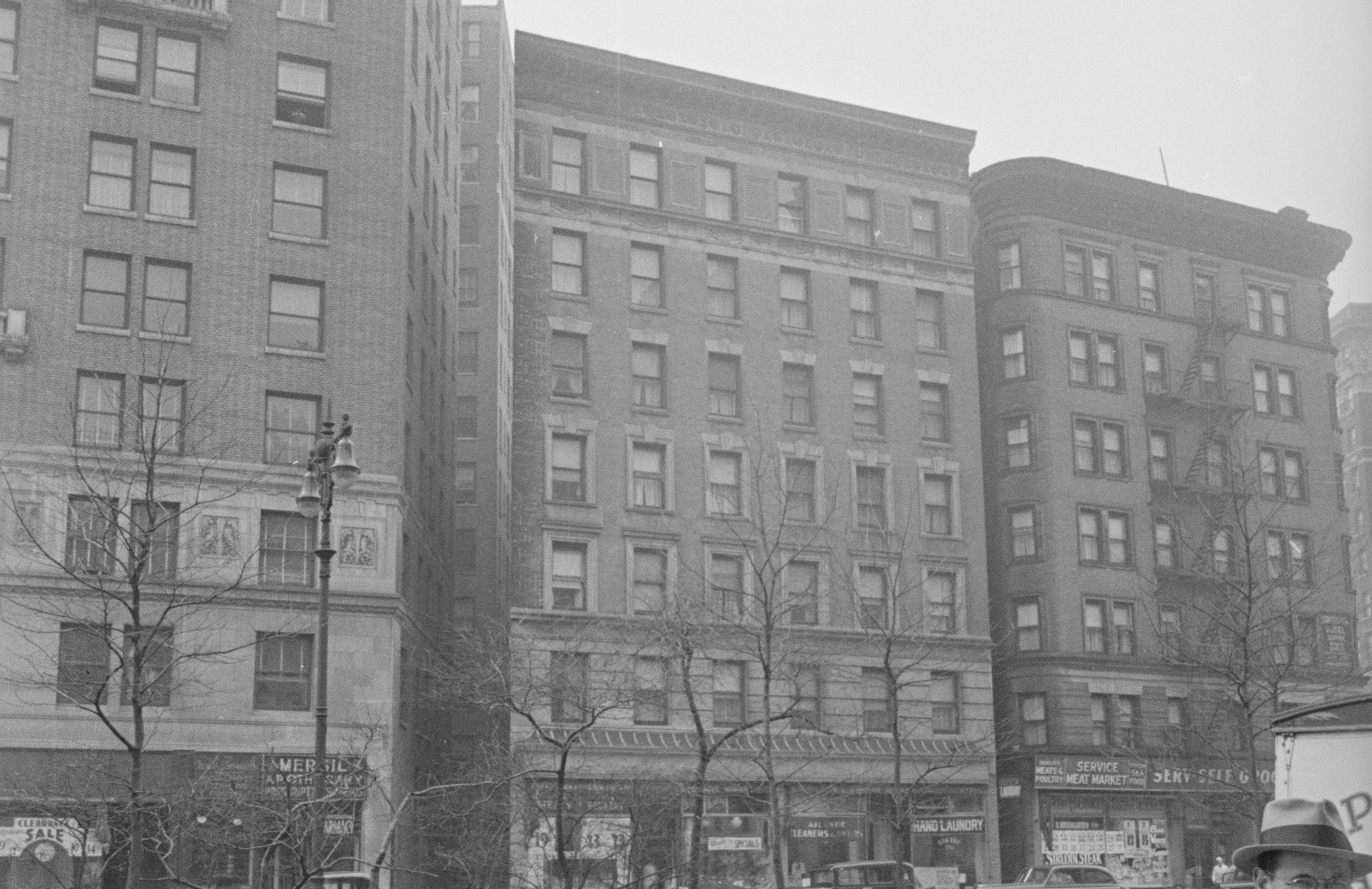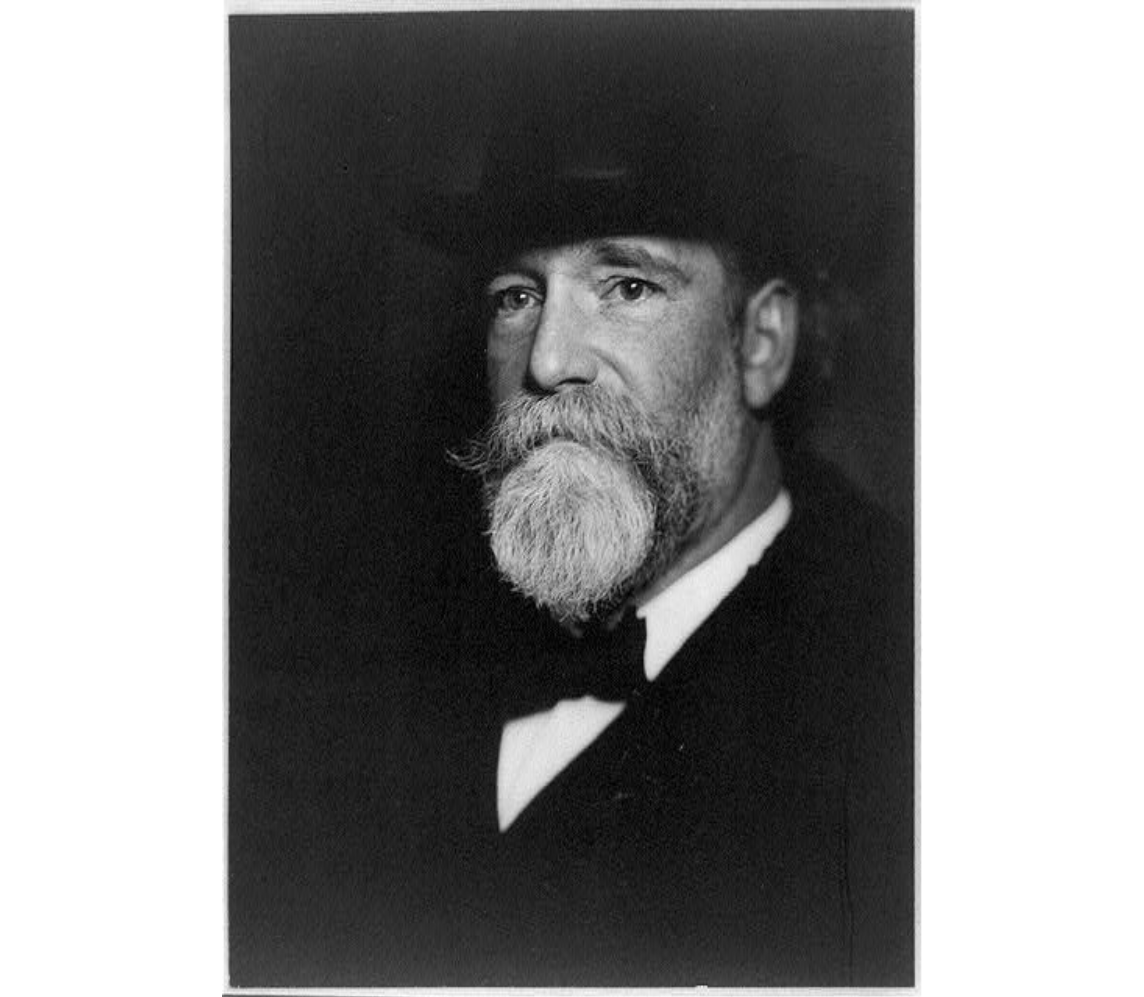
The Westbourne
by Tom Miller
On November 12, 1898, the Real Estate Record & Guide reported that William H. Picken had purchased the 54-foot-wide parcel of land on the west side of the Boulevard (renamed Broadway in 1900), running through the block to West End Avenue. The article noted that the plot “will be improved by the erection of a 7-story apartment house.” Picken hired architect Henry Andersen to design the building, to be called the Westbourne.
Anderson designed the building, completed the following year, in the Renaissance Revival style. He placed the residential entrance on quiet West End Avenue, while giving the busier Broadway side two ground floor shops. Above a two-story rusticated limestone base, the Westbourne was faced in gray brick and trimmed in limestone. Anderson embellished the facade with Renaissance-inspired carvings and stone balustraded balconies.
The southern store, at 2749 Broadway, became home to a barbershop, while next door was The Lilly Florist Store, run by George Hickey. Hickey advertised his “choice domestic and imported plants.”
The Record & Guide commented that the Westbourne “was a success at once.” The apartments ranged from six to seven rooms, each with one bath. They were home to well-heeled tenants like Professor Frederick M. Corse, a member of the American Economic Association; and Robert Bertine Alling and his wife, the former Anna Gordon Smith.
Typical of the residents in 1906 [was] … renowned organist Clarence Eddy (who had divorced his wife, the singer Sara Hershey, in 1905)
A graduate of New York University, Alling was a well-respected attorney. He and Annie, as she was known, would have three children while living in the Westbourne: Bertine, born in 1903; Nancy Annie Bertine in 1907; and Robert B., who was born in 1908. As was most often the case, it was Annie whose name appeared in society columns. On January 12, 1902, for instance, The New York Herald reported that she had hosted The West Side Whist and Euchre Club. The article noted, “The club has been one of the most successful ones of the season, euchre and whist being played alternatively each Friday. And on March 1, 1903, the newspaper reported, “Mrs. Robert B. Alling…gave a very pretty reception recently, which was quite largely attended.”
By the time of Annie’s reception, the former barbershop space was home to the Century Bank, and the florist shop had been taken over by Demetrius J. Pappas and his wife Mamie. They added artificial flowers to the store’s offerings, attracting milliners as new clients.
Typical of the residents in 1906 were civil engineers Robert Lundon Gordon and Augustus Rogers; Harry F. Meehan, who was with the Gansevoort Branch of the Fourteenth Street Bank; and renowned organist Clarence Eddy (who had divorced his wife, the singer Sara Hershey, in 1905). She established the Hershey School of Musical Art in Chicago.
Born in Greenfield, Massachusetts on June 23, 1851, Eddy began studying music at the age of 11. At the Vienna Exhibition of 1873, while on a European concert tour, he was deemed by master organist August Haupt, “undoubtedly the peer of any of the greatest living organists.” By the time he moved into the Westbourne, he was internationally known, and had played at no fewer than six World Fairs. He was the organist and director of music at the Tompkins Avenue Congregational Church in Brooklyn, and the Temple Beth-El in Manhattan. He remained in his Westbourne apartment at least through 1911.
In the early post-World War I years, the store at 2749 Broadway was home to a women’s apparel and accessories shop operated by the United Hosiery Stores. Among its employees in 1926 was 28-year-old Blanche Serret. Although she normally worked late on Saturday nights, her boss “said graciously that she could leave [on October 30] at 9 o’clock.” The reason was that she and her husband, Ramon, were celebrating their fourth wedding anniversary and guests were expected at their apartment at 10:00. The New York Sun said, “It was to be a gala affair.”
The newspaper related, “At twenty minutes to 9 Serret walked around to the shop to bring his wife home. He was a very happy man. Was the great event not to be properly celebrated? And was his wife not one of the prettiest women of the neighborhood?” Everything was prepared at the apartment—flowers filled the rooms and gifts had already arrived.
Anton Serret entered the shop and Blanche went to the back to prepare to leave. “Suddenly there was a commotion,” said the article. Blanche appeared from the back white-faced. “I’ve made a mistake,” she cried, and fell to the floor. She had been concerned over her weight recently and had taken to drinking Vichy water. Someone had used one of her empty bottles to hold cleansing fluid and Blanche grabbed it, swallowing the poison before she realized her mistake. Before a doctor could arrive, she was dead. The New York Sun reported, “It was a distraught man who returned to his home on Saturday night and informed those who came bearing congratulations that his wife was dead.”
When frequent customer Paul Auster wrote the screenplay for the 1995 film Smoke, he based Harvey Keitel’s character, Augie, on Cuartas.
By the Depression years, the respectability of the Westbourne residents declined. On September 7, 1939, for instance, the Long Island Star-Journal reported that 27-year-old Harry L. Hood had been arrested as one of a gang of burglars that had broken into the drygoods store of Isaac Chusit and made off with $250 worth of merchandise (closer to $4,600 by today’s standards).
Two years later a renovation was initiated that would result in 22 single-room-occupancy rooms per floor in the once-proud building. In 1970 the New Riverside Market operated from 2749 Broadway, and in 1976 Augie’s Jazz Bar, operated by Augusto Cuartas, opened next door.
Augie’s was a destination spot for jazz lovers around town. When frequent customer Paul Auster wrote the screenplay for the 1995 film Smoke, he based Harvey Keitel’s character, Augie, on Cuartas. The venue appeared in the motion picture when three cops, played by Michael Keaton, Anthony LaPaglia and Benjamin Bratt, considered stopping for a drink, but changed their minds when they saw their commanding officer there.
When Paul Stache and Frank Christopher took over the space in 1999, they paid homage to Augie’s and the film by naming the restaurant-jazz club Smoke. It remains in the space today.
There are still 128 single-room-occupancy units in the Westbourne, “for persons with very low incomes, persons with experience of homelessness, and preexisting tenants,” according to the building’s website. But, although the storefronts on the Broadway side have been severely altered, Henry Anderson’s 1899 design is greatly intact.
Tom Miller is a social historian and blogger at daytoninmanhattan.blogspot.com
Building Database
Keep Exploring
Be a part of history!
Think Local First to support the businesses at 2749-2751 Broadway:
Meet Paul Stache and Molly Johnson!



